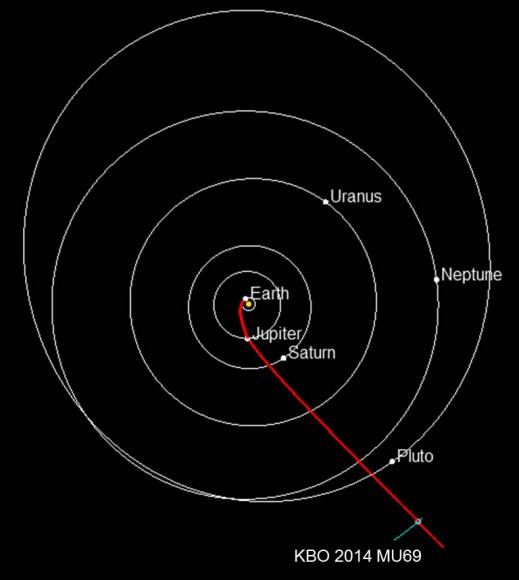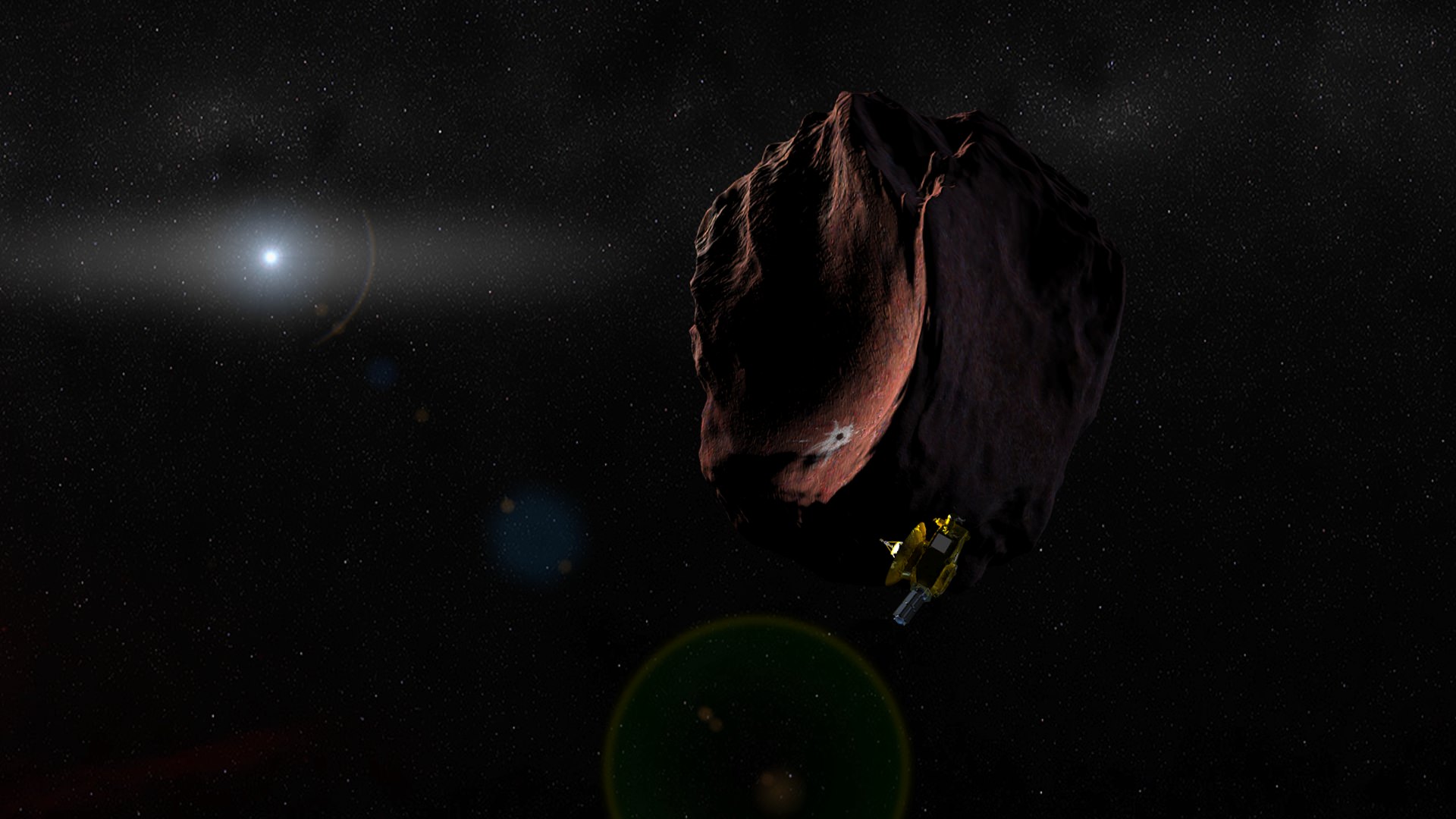Even though the New Horizons spacecraft hasn’t officially been approved to do a flyby of a distant Kuiper Belt Object in about 3 years, the engineering team has now performed two maneuvers in a series of four to direct the spacecraft towards an ancient and distant KBO named 2014 MU69.
“Second of four engine burns to target our KBO was completed successfully!! Go New Horizons! Go NASA!” said Principal Investigator Alan Stern on Facebook.
Two more burns will occur within the next 8 days.
The 25-minute burn on October 25 was the largest propulsive maneuver ever conducted by New Horizons. The team said that the spacecraft is in excellent health as it continues to transmit data from the Pluto system flyby in July. It is currently zooming through deep space at more than 52,000 km/hr (32,000 miles per hour) and it is now about 122 million kilometers (76 million miles) past Pluto and 5.09 billion kilometers (3.16 billion miles) from Earth.

New Horizons must travel about a billion miles to get to 2014 MU69, which is also nicknamed “PT1” (for “Potential Target 1”) and if all continues to go well, the spacecraft is expected to reach the KBO on January 1, 2019.
“2014 MU69 is a great choice because it is just the kind of ancient KBO, formed where it orbits now, that the Decadal Survey desired us to fly by,” Stern said back in August 2015 when the target was announced. “Moreover, this KBO costs less fuel to reach [than other candidate targets], leaving more fuel for the flyby, for ancillary science, and greater fuel reserves to protect against the unforeseen.”
The 2003 National Academy of Sciences’ Planetary Decadal Survey recommended that the first mission to the Kuiper Belt include flybys of Pluto and small KBOs, in order to sample the diversity of objects in that previously unexplored region of the solar system. PT1 is a completely different class of KBO than Pluto.
New Horizons has hydrazine-fueled thrusters, and it carries enough fuel for the flyby, but the team really wants to have the other two maneuvers carried out as scheduled on Oct. 28 and Nov. 4, in order to make the fuel last as long as possible.
The New Horizons team will submit a formal proposal to NASA for the KBO flyby in early 2016. NASA officials have said the discussions on whether to approve this extended mission will take place in the larger context of the planetary science portfolio, i.e., to see if it fits in the budget.
Given the success of the Pluto system flyby, and the success so far of the maneuvers to send the spacecraft to PT1, it would be a grave mistake not to take advantage of this opportunity.


“A grave mistake…”
Nancy, thank you for adding that. I hope we don’t need stronger language should NASA balk.
Where is all this extra cost ? everything is already made and paid up this is a extra bonus after Pluto and Charon and I am sure the guys that built New Horizons and are controlling it would work for Gratis…
“I am sure the guys that built New Horizons and are controlling it would work for Gratis…”
Yeah, I’m sure none of those people have mortgages, car payments, or families that need to eat.
As RS observed, most of the money is in the people, but that’s not the only concern. The arrays communicating with &/or observing NH’s progress have… ah, significant, let’s say… back-logs of stuff they could be doing instead, which could save time (and thus money) by shortening the duration of those projects, or obviating the need for new arrays + operational staff, et cetera.
If NH ends up suddenly defunded, I’m sure other missions will benefit from the release of resources which are otherwise currently tied up, though to what specific degree I couldn’t say with accuracy. Whether going that route would be a “grave mistake” or not is what’s up for discussion, but for the record I happen to agree (wholeheartedly!) with Ms. Nancy’s assessment.
“Potential Target 1” is a misnomer now that it has become THE target. Naming poll and IAU decision coming up, I suppose. I suggest using as a naming theme, acronyms for space missions which never happened and never will happen, like “ARM”.
How do you know ARM isn’t going to happen? We already know that you think you know everything but you’re just guessing and, even on the off chance you’ve guessed right, the IAU is hardly going to adopt this naming scheme as a monument to your self-proclaimed omniscience. Besides, 2014 MU69 is a classical KBO and there’s already a naming scheme for those: creation deities from various mythologies.